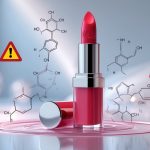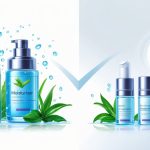Clean Beauty Brands Now Quietly Cutting Harmful Additives Most Adults Miss
Top Clean Beauty Brands Leading the Shift
Dermatologists say to read every label. Have they ever tried reading shampoo ingredients with fogged-up glasses? Brands keep yanking out the worst chemicals for “biodegradable surfactants,” but I honestly just want to avoid a rash. That’s the bar.
Beautycounter’s Standards
Late-night Target run, aisle six, I’m looking for something that won’t nuke my skin. Beautycounter keeps popping up, mostly because some influencer swears by their “Never List.” That’s over 2,800 ingredients they refuse to use—way stricter than the law. I can’t even pronounce most of them. They ban formaldehyde, parabens, oxybenzone, TPHP—stuff that’s probably still in my old makeup bag.
Yeah, their reps are intense (it’s a direct sales thing, don’t judge), but they brag about third-party testing and showing every ingredient. I checked their transparency spiel, and they’ve got Allure and SELF Magazine hype, plus actual toxicologists. Met someone whose eczema only tolerates their Dew Skin—how is that possible? Everything breaks me out.
Brand Profiles: Ethical Practices in Action
Half these so-called “ethical” brands just quietly swap out the worst offenders and leave PEGs and fake fragrances in. Superzero keeps winning Sephora sustainability awards, and they use real paper packaging, not weird bioplastics, so my recycling guilt takes a nap. Shampoo bars that don’t dissolve into mush? Miracles.
Alaffia’s everywhere now—Fair For Life certification, shea products, QR codes I can’t scan in the shower. Their supply chain map is cool, but honestly, I just want something herbal that isn’t wrapped in plastic. Ingredient quality only matters if my skin doesn’t revolt, so now I check transparency dashboards and filter by sustainably sourced, minimal processing. Is it perfect? Not even close. But it beats my old strategy of picking whatever was on sale and hoping for the best.
Natural and Organic Ingredients in Clean Beauty
“Natural”—what does that even mean? I’m squinting at a serum bottle with font so tiny I need a magnifying glass, and a month later my dermatologist is lecturing me about plant-based ingredients. “Organic” is supposed to mean certified, audited, not just “contains aloe.” There’s probably a chart somewhere, but the packaging never tells the whole story.
Plant-Based Ingredients Benefits
Ingredient lists: aloe vera, green tea extract, chamomile—these aren’t just for show. Supposedly, they’re loaded with vitamins, emollients, amino acids, and other things I can’t remember. Industry folks at wonnda.com say plant-based stuff is driving the clean beauty trend in 2025. Brands claim it’s gentler, but I’m convinced half the reason is so we can actually pronounce something.
I tried calendula oil—no issues. Rose hip oil? My friend’s face hated it. Just because it’s plant-based doesn’t mean it’s automatically safe. Dr. Rachel Nazarian (dermatologist, knows her stuff) says, “plant-based doesn’t mean safe for everyone.” Learn the difference between what sounds natural and what’s actually proven. Or just do a patch test and hope for the best.
Antioxidants for Skin Health
Bought a serum once just because the box screamed “antioxidant-rich!”—honestly, I didn’t give a damn until a friend shoved some Green Beauty Community article in my face about why antioxidants are the backbone of those so-called organic formulas. Vitamin C, E, polyphenols (that’s green tea and pomegranate, apparently)—they’re supposed to mop up free radicals before UVA rays or pollution can trash your collagen. Supposedly.
Derms always talk up things like resveratrol or ferulic acid. They’re in all the plant-based stuff, and I guess there’s real research, not just marketing. Forums are packed with people swapping favorite serums loaded with antioxidants, but half of them skip SPF. Which—why even bother? The “clean beauty” crowd loves bragging about antioxidant content, but what matters is if the extraction keeps them active. So many brands fudge this if they’re buying bulk. I’ll sometimes just DM the company—sometimes they reply, sometimes it’s just radio silence.
Sourcing Ethically and Sustainably
Here’s what still drives me nuts: companies love to shout about “ethically sourced” ingredients but then barely mention their supply chain. I keep thinking about those brands with dreamy rainforest ads, meanwhile their palm oil comes from who-knows-where. The Clean Beauty Awards folks try calling this out, but there’s always something sketchy. “Wild-harvested”? Show me receipts, not some Canva badge.
Supposedly, transparency is the new baseline. Some brands actually lay out ingredient origins, even batch numbers. Others just slap “ethically sourced” on and hope you won’t ask questions. Sometimes there’s a COSMOS or Ecocert sticker—does that mean anything? Maybe. But loopholes are everywhere. That eco-bragging face cream I bought last year? Turns out, certifications are complicated, and “clean” is still a mess. And nobody talks about the carbon cost of shipping “local” botanicals halfway across the planet. But hey, “sustainability” is just a word to toss around in meetings, right?
Personal Care, Skincare, and Haircare Products
People keep asking: is it all hype? Skincare, hair serums, even toothpaste (fluoride-free, if you like to gamble) are quietly swapping out sketchy ingredients for “cleaner” ones. You’ll see parabens, sulfates, and dyes replaced by squalane, rice peptides, eco-cert ceramides. Why did brands bury this under layers of PR until now? I don’t know. Feels like they’re just catching up.
Clean Skincare Innovations
Don’t get me started on retinol alternatives. My grandma still uses that sticky vitamin A cream, but every day my inbox spits out another bakuchiol launch. Some Harvard derm on Zoom told me bakuchiol works like retinol but without the drama—no redness, no peeling, just the same “plumping” effect. Maybe. I don’t know.
True Botanicals’ Hillary Peterson swears by chebula serums, says they outperform the old stuff. Even big SPF brands are sneaking in mineral filters and ditching chemical ones because apparently everyone hates them now. I read that clean beauty is outpacing luxury brands. Not surprised, considering how many of us have been fighting adult acne forever.
New launches are all about “sustainable actives”: niacinamide from fermentation, microalgae instead of synthetic thickeners, polyhydroxy acids that don’t sting. If you want real results, skip the hype and look for short ingredient lists. Fewer fillers, less risk of hives, at least according to every derm on TikTok.
Hair Care Without Harmful Additives
My dad used to say sulfate shampoo was fine “if you wash your hair like a man.” Then he flaked for a month. The new thing? Fragrance-free, silicone-free, no petroleum stabilizers. Minimalist conditioners brag about what’s not in the bottle.
Brands now highlight that they ditched parabens, drying alcohols, formaldehyde donors, color-stripping agents. I heard (okay, Instagram DMs) that indie brands like PIPER LILY™ are dropping animal keratin, pushing vegan and cruelty-free. I used to think keratin just meant “shiny.” Oops.
Checked the latest clean beauty awards: shampoos and serums packed with oat peptide, bamboo water, micro-encapsulated vitamins. The twist? Your scalp might actually get better if you stop nuking it every wash. But “rebalancing” clay paste still looks like green pudding. Not sure I’m sold.
Broader Personal Care Shifts
Toothpaste without SLS. Deodorant with no aluminum. I thought it was a joke until my dentist started pushing plant enzyme mouthwash and my Pilates instructor raved about zinc deodorant holding up after four flights of stairs. Industry people at McKinsey don’t seem fazed; apparently, the $450 billion beauty market just shrugs as everyone jumps on green chemistry.
Here’s the weird part: stuff nobody thinks about—body wash, lip balm—now swaps microplastics for rice starch and tapioca pearls. Saw a “clean” hand sanitizer last week with no denatured alcohol, just lactic acid. Does it work? No idea. Smells like salad dressing, though.
Halfway through reading ingredient lists, I just gave up. Trend forecasters swear this isn’t just indie brands anymore—big stores are tweaking formulas before anyone even notices, or before TikTok blows them up.



